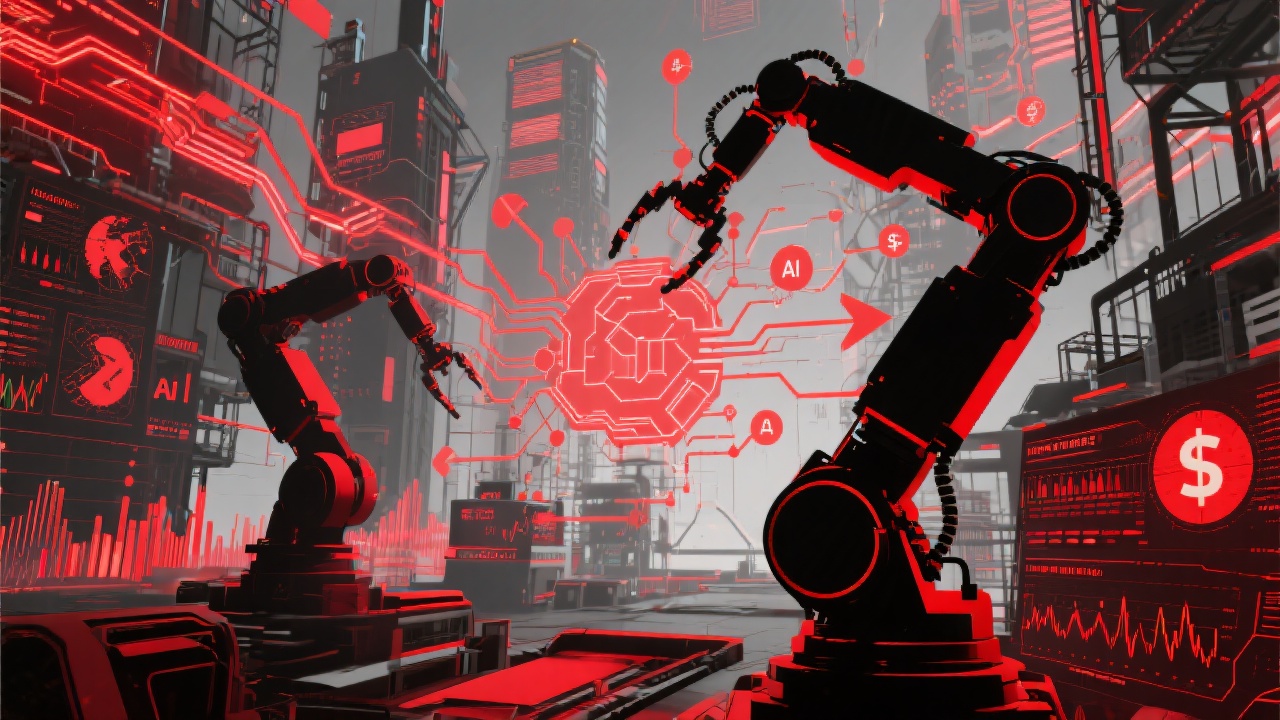Robotics Technologies: Ecosystem, Leading Startups, and Future Expectations
With core components including sensors, artificial intelligence, mechanical actuators, and control systems, robotics technologies are systems, tools, and software developed to automate a wide range of tasks and support human labor. These technologies are already being applied across industries ranging from industrial automation to healthcare, agriculture, and logistics.

With core components including sensors, artificial intelligence, mechanical actuators, and control systems, robotics technologies are systems, tools, and software developed to automate a wide range of tasks and support human labor. These technologies are already being applied across industries ranging from industrial automation to healthcare, agriculture, and logistics.
The robotics technologies ecosystem is a dynamic market that attracts both major corporations and innovative startups. The global robotics market, valued at USD 43.8 billion in 2021, is expected to reach USD 70.6 billion by 2026, representing a CAGR of 10.5% between 2021 and 2026.
Developments in artificial intelligence (AI) are accelerating the adoption of robotics technologies while also increasing their value. With a CAGR of 12.3%, the market is projected to reach USD 225 billion by 2030. AI integration makes machines smarter and more adaptive, enabling them to perform complex tasks with greater accuracy. The Asia-Pacific region is leading this growth with rapid automation expansion and active R&D efforts.
Subcategories of Robotics Technologies
- Industrial Robots – Used in automotive, electronics, metals, and heavy industry sectors to automate tasks such as assembly, welding, painting, and material handling. Leading ventures include Universal Robots and FANUC, which develop robotic arms and automated assembly lines.
- Medical Robots – Applied in surgical operations, rehabilitation, patient care, and drug delivery. For example, Intuitive Surgical’s da Vinci system is a robotic platform for minimally invasive surgeries.
- Agricultural Robots – Automate tasks such as planting, irrigation, harvesting, and pest control. John Deere and Blue River Technology are notable players developing precision agriculture technologies.
- Logistics Robots – Automate warehouse, material handling, and order fulfillment processes. Amazon Roboticsoptimizes warehouse operations, while Boston Dynamics’ Spot robot is used in industrial environments for data collection and inspections.
- Home Robots – Devices designed for cleaning, security, and home automation. Companies from iRobot to Xiaomiproduce home robots, but the sector remains in its early stages. A major leap in home robotics adoption is expected in the coming years, benefiting companies with existing production and distribution capacity.
- Autonomous Vehicles – Vehicles powered by sensors and AI that can move without human intervention. Examples include Tesla’s autonomous driving features and Waymo’s robotaxis. Currently, excluding R&D and certification costs, making a car fully autonomous exceeds USD 100,000 per vehicle. With falling sensor costs and advancing technology, this figure is projected to drop below USD 10,000 within five years, signaling a fundamental shift in the automotive industry and workforce needs.
- Service Robots – Used in customer service, cleaning, security, and entertainment. SoftBank Robotics’ Pepper is a service robot designed for customer engagement and social interaction.
Notable Startups in Robotics
- Boston Dynamics – Known for dynamic, high-mobility robots such as Spot (quadruped robot for industrial/research use) and Atlas (humanoid robot).
- Universal Robots – Develops collaborative robots (cobots) offering cost-effective automation for SMEs.
- Intuitive Surgical – Developer of the da Vinci surgical system, widely used for minimally invasive surgeries.
- Blue River Technology – Specializes in agricultural robotics and precision farming solutions; acquired by John Deere.
- Nuro – Builds autonomous delivery vehicles for e-commerce and logistics, enabling local deliveries with unmanned vehicles.
Examples of Publicly Traded Robotics Companies
- ABB (USD 102B): Switzerland-based leader in industrial robotics and automation systems.
- Fanuc (USD 37B): Japan-based global leader in CNC systems, industrial robots, and factory automation.
- KUKA (USD 3B): Germany-based specialist in industrial robotics, especially robotic arms for the automotive industry.
- Yaskawa Electric (USD 9B): Japan-based provider of motion control, robotic arms, servo motors, and drives.
- Intuitive Surgical (USD 118B): US-based developer of robotic surgical systems, best known for the da Vinci platform.
- Zebra Technologies (USD 15B): US-based provider of data capture and analytics, offering autonomous mobile robots for logistics and inventory management.
Active Investors
Global investments in robotics startups are rapidly increasing. In 2023, robotics investments totaled USD 12.9 billion, with a strong focus on systems integrating AI and machine learning. Investment activity is concentrated in the US, China, and Germany.
Conclusion
Robotics technologies represent a rapidly growing sector with significant opportunities. Both established corporations and innovative startups are making major advances. With the market projected to reach USD 225 billion by 2030, robotics offers vast investment potential. Large-scale companies dominating their verticals are expected to accelerate robotics adoption, driving substantial value growth. Government interest in robotics will also serve as a major driver of future expansion.
As Boğaziçi Ventures, we anticipate that robotics, in parallel with AI advances, will grow as projected, which is why we have included Robotics and Space Technologies in our investment strategy. Accordingly, we launched the BV Portföy Robotics and Space Technologies Variable Fund (RUT) on July 1, 2024, offering investors access to global publicly listed robotics and space technology companies. Investors can purchase the fund via TEFAS (code RUT) or directly through BV Portföy.
Meanwhile, our BV Growth funds focus on early-stage innovative startups that leverage AI to reshape and disrupt industries.


